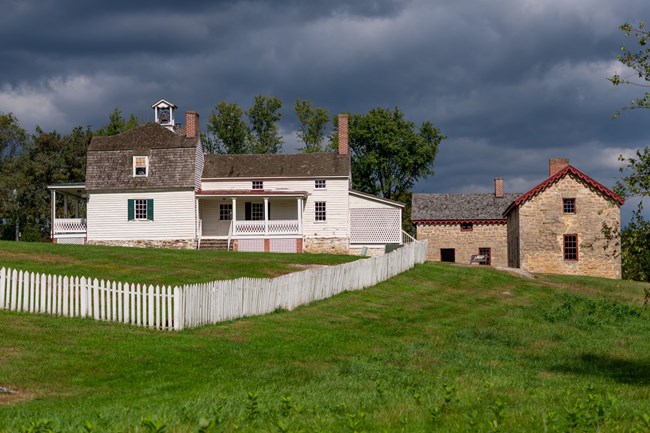|
Hampton National Historic Site is a beautiful landscape that masks stories of human enslavement. Today, this shared ground offers opportunities for both reflection and limited recreation. Please be mindful of the sensitive nature of this park and use the guide below to respectfully enjoy its space. Standard Conditions for Photography and Filmography Within the Park

NPS Culturally Sensitive AreasThe history of Hampton National Historic Site is first and foremost the history of a plantation built upon the enslavement of hundreds of individuals. While photographs and filming are allowed on the public lands, respecting the site is the park's top priority. Following the guidelines and laws outlined on this page is the first step to keeping the site protected. However, the park has several culturally sensitive areas related to the history of enslavement, and it is highly recommended to avoid these areas when holding photography sessions.The overseer's house (left) and quarters for the enslaved (right) are three structures that are very culturally charged due to their direct connection with the history of enslavement at Hampton. It is recommended to consider these buildings' histories and the stories of those that were enslaved here for hundreds of years, before considering their placement in any photography sessions. When a Permit is RequiredWhen a Permit is Required The following questions are what the park's permit office will ask to determine if a photography permit is required.
If the photography session will require models, sets, or props, than a photography permit will be required. The definitions of those items are listed below:
Models: a person or object that serves as the subject for still photography for the purpose of promoting the sale or use of a product or service. Portrait subjects such as wedding parties and high school graduates are not considered models. Sets and Props: items constructed or placed on NPS lands to facilitate still photography, including backdrops, generators, microphones, stages, lighting banks, camera tracks, vehicles, rope and pulley systems, rigging, trained animals or inanimate objects, such as camping equipment, campfire, wagons, and so forth, when used to stage a specific scene. The use of a camera on a tripod is not considered a prop. If the photography session will require more equipment than a camera and tripod, than a photography permit will be required.
If the photography session will take place in areas either not accessible to the general public or areas of the park that are closed, than a photography permit will be required.
In accordance with the EXPLORE Act, any photography or filming activity that involves more than 8 individuals will require a permit to take place. This includes all photography subjects, participants, and crew.

|
Last updated: November 18, 2025
